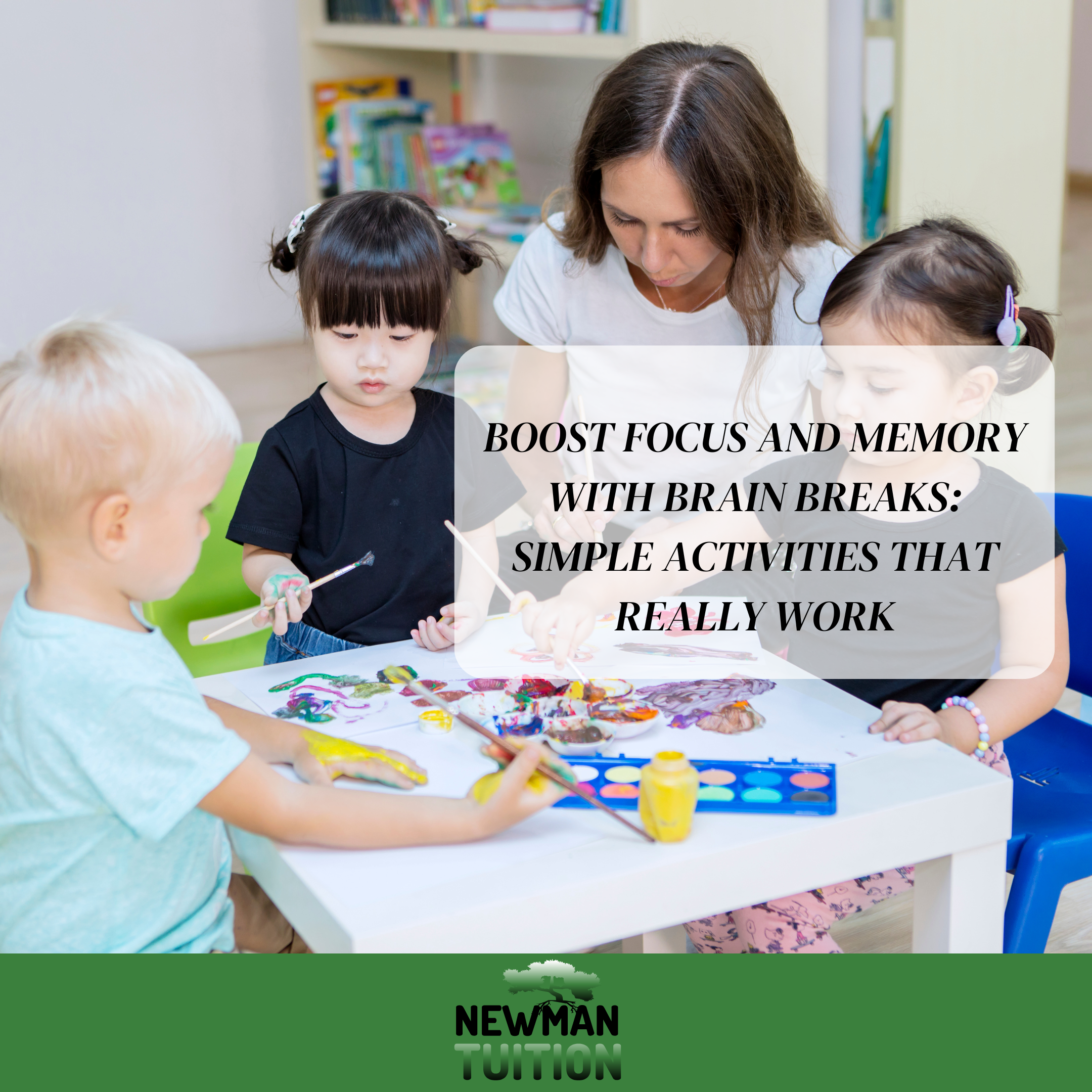Boost Focus and Memory with Brain Breaks: Simple Activities That Really Work

In today’s fast-paced world of education, it’s easy to assume that more time studying equals better results. But did you know that short, regular breaks can actually improve focus, memory, and academic performance? Known as brain breaks, these quick, intentional pauses are designed to refresh the mind and re-energise students during learning sessions.
At Newman Tuition, we understand the importance of balance. Whether your child is preparing for the 11+, GCSEs, or A-levels, brain breaks are a powerful tool to help them stay sharp and motivated.
What Are Brain Breaks?
Brain breaks are short periods—often 1 to 10 minutes—where the brain shifts away from academic content. The goal is to reduce mental fatigue, improve concentration, and boost long-term retention of information.
They’re especially effective for children and teenagers, whose brains are still developing and more susceptible to overload. But adults benefit too!
Why Do Brain Breaks Work?
When we focus for too long without resting, our ability to process and store new information diminishes. Brain breaks give the prefrontal cortex (the part responsible for decision-making and concentration) a chance to reset. This leads to:
- Improved focus
- Better emotional regulation
- Increased creativity
- Stronger memory consolidation
Fun and Easy Brain Break Ideas
Here are a few tried-and-tested ideas that can be used between study tasks or tutoring sessions:
1. Movement Breaks
Physical activity increases blood flow to the brain and helps shake off restlessness.
- Do 10 star jumps
- Dance to a favourite song
- Stretch or do simple yoga poses
- Run on the spot for 30 seconds
2. Mindfulness Moments
Mindful breathing or visualisation helps calm the nervous system.
- Try “box breathing”: Inhale for 4 counts, hold for 4, exhale for 4, hold for 4
- Close your eyes and picture a calm scene (like a beach or forest)
- Listen to a guided meditation or nature sounds
3. Brain Teasers & Games
Engage a different part of the brain with a puzzle or quick game.
- Solve a riddle
- Try a 1-minute memory game (e.g., list items then test recall)
- Play a quick round of ‘Would You Rather?’
4. Creative Tasks
Activating the imagination gives the logical brain a break.
- Doodle freely or colour in a pattern
- Write a silly sentence using three random words
- Do a “quick draw” challenge—30 seconds to sketch an object
5. Outdoor Breathers
A change of scenery can reset attention span.
- Step outside for some fresh air
- Walk around the garden or block
- Spot five things in nature
How Often Should Brain Breaks Be Used?
As a general rule:
- For younger children: every 15–20 minutes
- For older students: every 30–45 minutes
During longer revision sessions or tutoring blocks, schedule in slightly longer breaks every 90 minutes to avoid burnout.
Brain Breaks and Tutoring: A Smart Match
At Newman Tuition, many of our tutors naturally incorporate brain breaks into lessons, especially when working with younger learners or students with additional learning needs such as ADHD. We’ve found that these mini pauses cantransform a session—shifting a child from overwhelmed to engaged in minutes.
It’s not about wasting time; it’s about using time wisely.
Sometimes the most effective study strategy isn’t more flashcards or longer hours—it’s a well-timed brain break. By integrating short, meaningful pauses into learning routines, students can stay focused, retain more information, and approach challenges with a clearer mind.
Looking for more ways to support your child’s learning journey? Get in touch with the Newman Tuition team—we’d be happy to help.